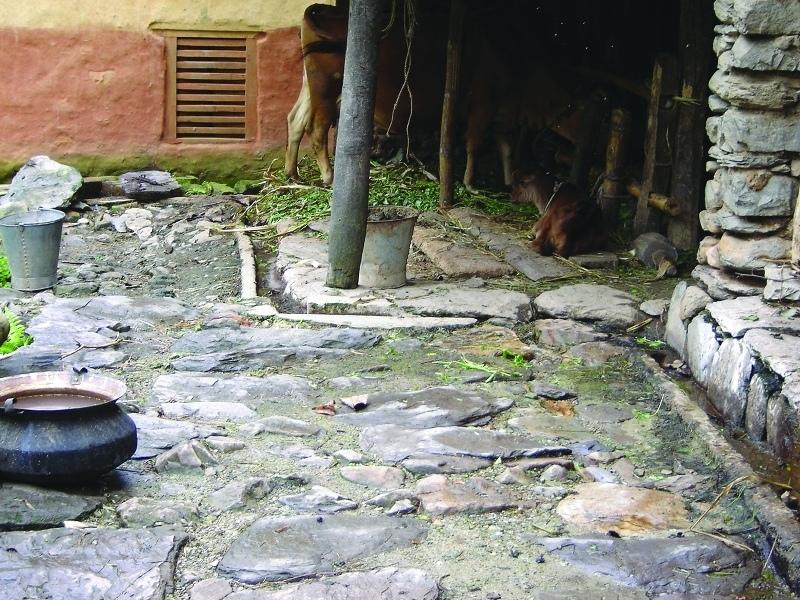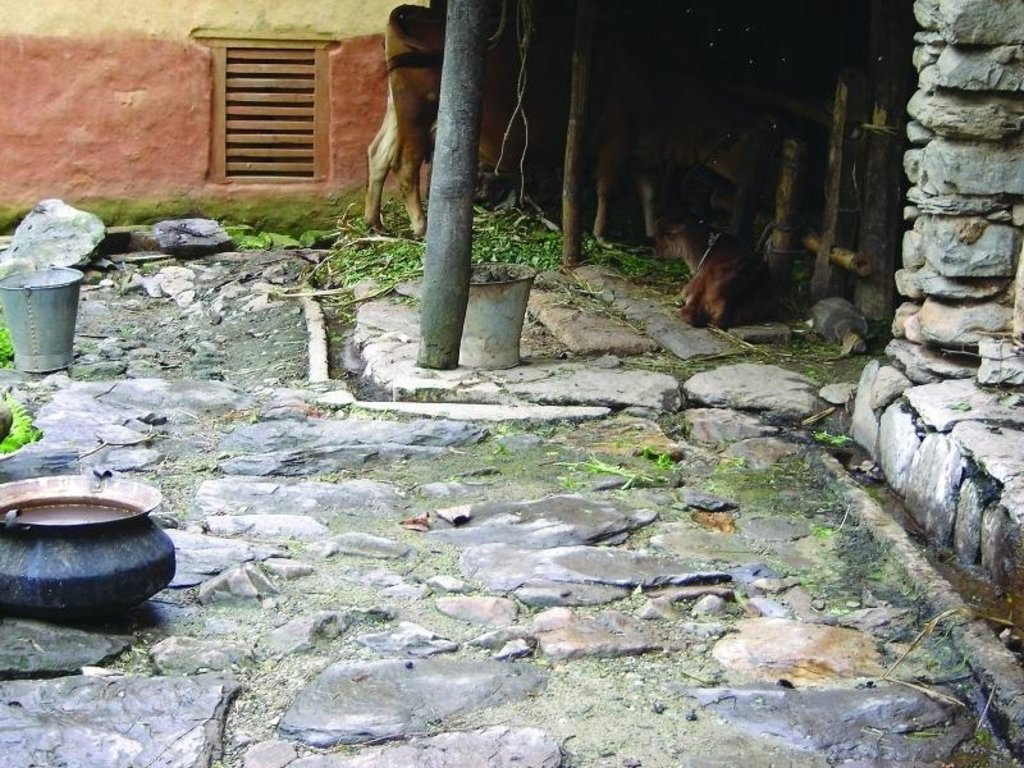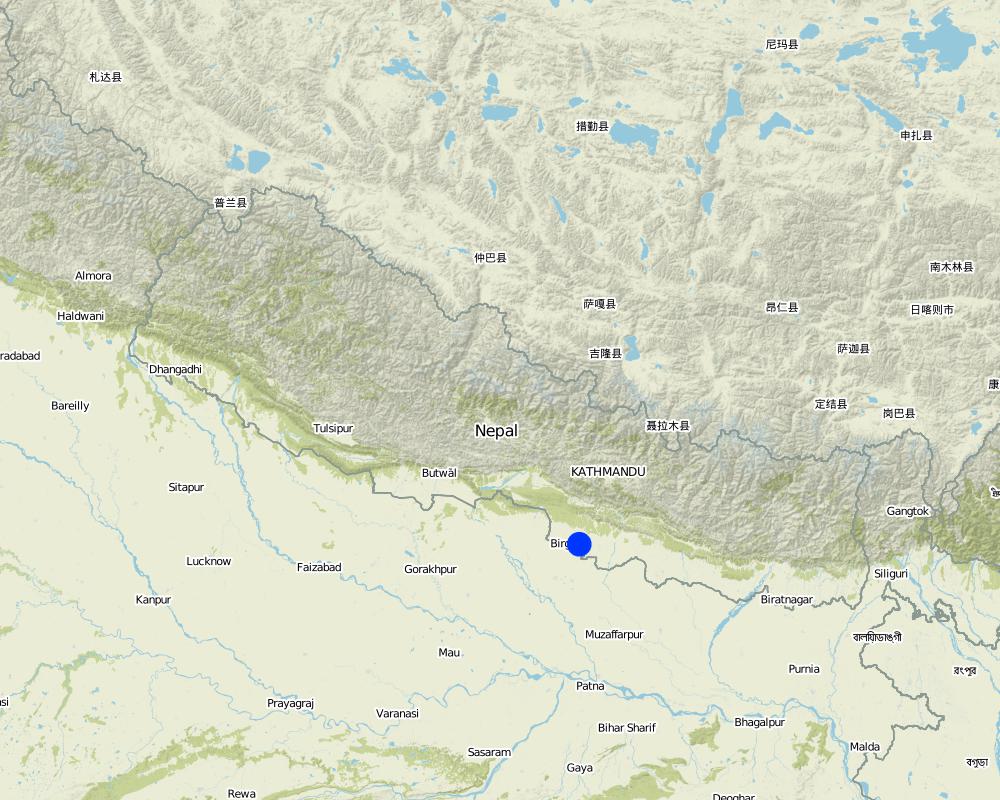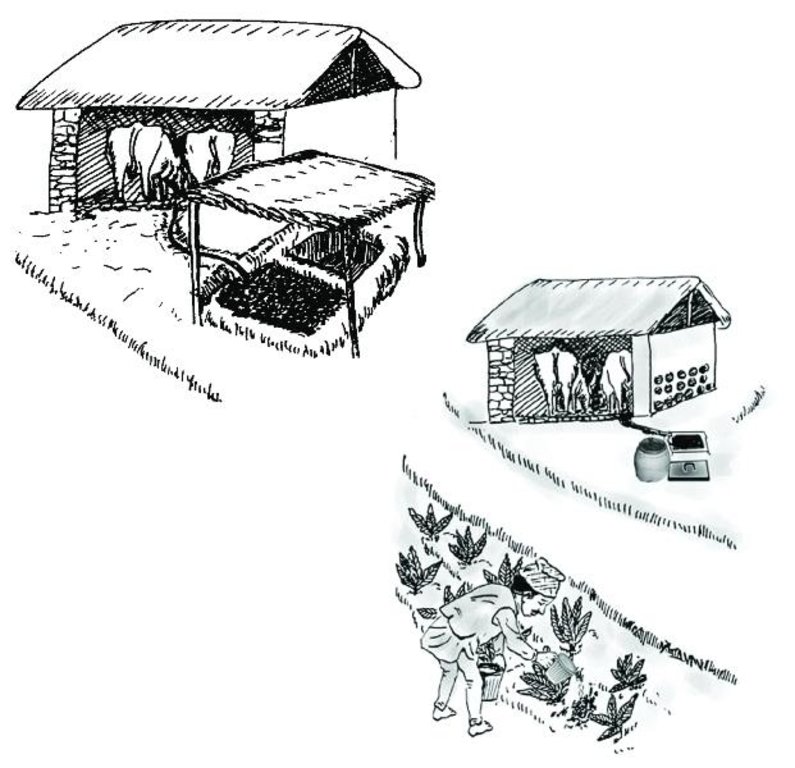Improved cattleshed for urine collection [Непал]
- Создание:
- Обновить:
- Составитель: Richard Allen
- Редактор: –
- Рецензенты: David Streiff, Alexandra Gavilano
Mutra sankalan ka lagi sudhariyeko goth (Nepali)
technologies_1752 - Непал
Просмотреть разделы
Развернуть все Свернуть все1. Общая информация
1.2 Контактные данные специалистов и организаций, участвующих в описании и оценке Технологии
Специалист по УЗП:
Director
Soil Management Directorate, Department of Agriculture
Непал
Специалист по УЗП:
Team Leader
Sustainable Soil Management Programme
Непал
Название проекта, содействовавшего документированию/оценке Технологии (если применимо)
Sustainable Soil Management Programme, Nepal (SSMP)Название организации (-ий), содействовавших документированию/оценке Технологии (если применимо)
HELVETAS (Swiss Intercooperation)Название организации (-ий), содействовавших документированию/оценке Технологии (если применимо)
Department of Agriculture, Soil Management Directorate, Hariharbhawan Lalitpur (doasoil) - Непал1.3 Условия, регламентирующие использование данных, собранных ВОКАТ
Составитель и ответственный(-ые) специалист(-ы) согласны с условиями, регламентирующими использование собранных ВОКАТ данных:
Да
1.5 Ссылка на Анкету (ы) по Подходам УЗП (документируется с использованием ВОКАТ)

Farmer field schools on integrated plant nutrient systems [Непал]
Participatory and collaborative learning through the farmer field school approach
- Составитель: Richard Allen
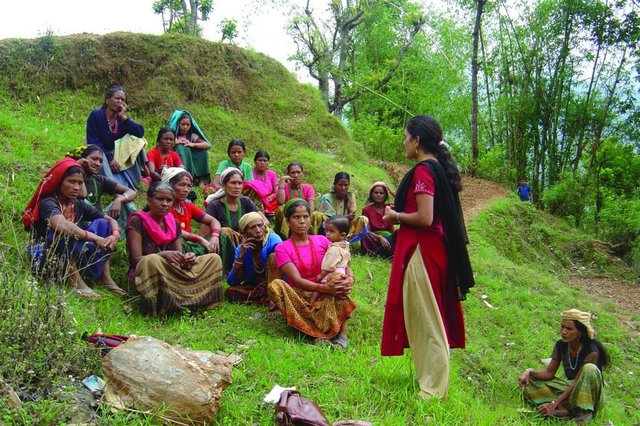
Farmer-led experimentation [Непал]
Participatory technology testing and adaptation through farmer-led experiments
- Составитель: Richard Allen

Farmer-to-farmer diffusion [Непал]
Wider diffusion of sustainable soil management technologies through a demand responsive farmer-to-farmer diffusion approach
- Составитель: Richard Allen
2. Описание Технологии УЗП
2.1 Краткое описание Технологии
Определение Технологии:
Collection of cattle urine in improved cattle sheds for use as liquid manure and organic pesticide
2.2 Подробное описание Технологии
Описание:
Nitrogen is the most important macronutrient for plants, and high crop productivity can only be achieved by making sufficient nitrogen available to crops. Nitrogen is also the most limiting nutrient in farms across Nepal’s midhills. Traditionally farmers applied farmyard manure to fertilise their needs. In many places this is being supplemented or even entirely replaced by inorganic fertiliser - mainly urea. The price of inorganic fertiliser has increased continuously in recent years and it is only available in limited quantities in areas far from the roadheads. On the other hand, cultivation practices are intensifying with increased cropping intensities and more nutrient-demanding crops as, for example, local varieties are replaced by hybrids and new crops are grown. This can easily lead to declining soil fertility and nutrient mining if it is not compensated for by an equivalent increase in organic or mineral fertilisation.
Cattle urine is a viable alternative to mineral fertiliser. Of the nitrogen excreted by cattle, 60% is found in the urine and only 40% in dung. In traditional sheds, urine is left to be absorbed in the bedding material, while excess urine is channelled out of the shed and disposed of. The technology described here - improved cattle sheds- are designed for collecting the urine in a pit or drum. This pit is generally located in the shed itself or just outside connected to the drainage channel through a pipe and protected from rain and runoff. Where urine is collected for incorporation in farmyard manure, the pit may be directly connected to the manure pit or heap. Urine that is going to be used as liquid manure or organic pesticide has to be stored in a drum for fermentation.
A household with two cattle can save the equivalent of purchasing about 100 kg of urea over one year by applying urine either directly as liquid fertiliser or as a component in improved farmyard manure.
2.3 Фотографии, иллюстрирующие Технологию
2.5 Страна/ регион/ места, где применяется Технология, информация о которых собрана в данной Анкете
Страна:
Непал
Более точная привязка места:
Midhill districts of Nepal
Map
×3. Классификация Технологии УЗП
3.1 Основные цели и задачи реализации Технологии
- Collect fertilizer
3.2 Текущий(-ие) тип(-ы) землепользования на территории, где применяется Технология

Пахотные угодья и плантации
- Однолетние культуры
Пояснения:
Major land use problems (compiler’s opinion): Intensifying cultivation practices with either 1) inadequate application of fertilisers leading to a decline in soil fertility and the mining of soil nutrients or 2) application of too much fertiliser causing environmental problems through excessive leaching, and losses of fertiliser in surface runoff and consequent eutrophication or nitrification of streams, ponds, or groundwater.
3.5 Категория УЗП, к которой относится Технология
- Комплексное управление почвенным плодородием
3.6 Мероприятия УЗП, выполняемые в рамках Технологии

управленческие мероприятия
- У6: Управление отходами (переработка, вторичное использование, снижение количества отходов)
Пояснения:
Main measures: management measures
3.7 Основные проблемы деградации земель, на решение которых направлена Технология

ухудшение химических свойств почв
- Хп: Снижение плодородия и уменьшение содержания органического вещества (вызванное не эрозией, а другими причинами)
3.8 Предотвращение и снижение деградации земель, или восстановление нарушенных земель
Укажите цель Технологии по отношению к деградации земель :
- не применимо
4. Технические характеристики, мероприятия по практической реализации, вложения и стоимость
4.1 Технический рисунок, иллюстрирующий Технологию
Спецификация (пояснения к техническому рисунку):
a) Urine collection and direct incorporation in covered farmyard manure pit.
b) Urine collection for later application as liquid manure or organic pesticide.
Technical knowledge required for field staff / advisors: low
Technical knowledge required for land users: low
Main technical functions: increase in organic matter, increase in soil fertility, increase in soil productivity, pest control
Secondary technical functions: supplementary irrigation
4.2 Общая информация по необходимым вложениям и стоимости
Уточните, как рассчитывались затраты и вложения:
- на технологическую единицу
Укажите единицу:
Urine collection system
Укажите денежные единицы, использованные для подсчета затрат:
- Доллары США
Укажите среднюю дневную заработную плату наемных работников:
2.00
4.3 Мероприятия, необходимые для начала реализации
| Деятельность | Время (сессия) | |
|---|---|---|
| 1. | Provide slight slope to the cattle shed floor | |
| 2. | Dig a draining ditch and a collection pit, if possible at the lowest point inside the shed. If this is not possible, an outside pit should be dug, protected from rain and runoff, and connected with the draining ditch through a pipe or a channel. | |
| 3. | Make the floor as impermeable as possible; e.g. with cement (expensive and durable), stone slabs, soil compaction, or clay (cheap but not durable). The more impermeable the floor, the more urine can be collected. | |
| 4. | Provide a jug/’decapitated’ plastic bottle/cup/etc. to scoop the urine out of the collection pit into the fermentation drum. |
4.4 Вложения и затраты, необходимые для начала реализации
| Опишите затраты | Единица | Количество | Затраты на единицу | Общая стоимость на единицу | % затрат, оплаченных землепользователями | |
|---|---|---|---|---|---|---|
| Оплата труда | Labour | per unit | 1,0 | 6,0 | 6,0 | 100,0 |
| Строительные материалы | Plastic drum | per unit | 6,0 | 1,0 | 6,0 | 100,0 |
| Общая стоимость запуска Технологии | 12,0 | |||||
| Общие затраты на создание Технологии в долларах США | 12,0 | |||||
Пояснения:
Duration of establishment phase: 0.25 month(s)
4.5 Поддержание/ текущее обслуживание
| Деятельность | Сроки/ повторяемость проведения | |
|---|---|---|
| 1. | When the collection pit is full, the collected urine has to be removed from the pit and stored in a plastic drum for fermentation. | |
| 2. | The urine is applied as liquid fertiliser by jug or through drip irrigation. |
4.6 Стоимость поддержания/ текущего обслуживания ( в год)
Пояснения:
It is clear that cattle or buffaloes are required for urine production. To help farmers to use their own resources, it is suggested to start with the cheapest and simplest form of urine collection and a compacted sloping floor and a collection pit within the shed. This allows the farmer to see the benefits of collecting the urine and will encourage them to invest in more expensive materials to improve the efficiency of urine collection. Cost as in January 2007
5. Природные и социально-экономические условия
5.1 Климат
Среднегодовое количество осадков
- < 250 мм
- 251-500 мм
- 501-750 мм
- 751-1000 мм
- 1001-1500 мм
- 1501-2000 мм
- 2001-3000 мм
- 3001-4000 мм
- > 4000 мм
Пояснения/ комментарии по осадкам:
Annual rainfall: Also 2000-3000 mm
Агроклиматическая зона
- влажная
Thermal climate class: subtropics
5.2 Рельеф
Склоны (преобладающие):
- пологие (0-2%)
- покатые (3-5%)
- покато-крутые (6-10%)
- крутые (11-15%)
- очень крутые (16-30%)
- чрезвычайно крутые (31-60%)
- обрывистые (>60%)
Формы рельефа:
- плато/ равнины
- гребни хребтов/холмов
- склоны гор
- склоны холмов
- подножья
- днища долин
Зона высотной поясности:
- 0-100 м над уровнем моря
- 101-500 м н.у.м.
- 501-1000 м н.у.м.
- 1001-1500 м н.у.м.
- 1501-2000 м н.у.м.
- 2001-2500 м н.у.м.
- 2501-3000 м н.у.м.
- 3001-4000 м н.у.м.
- > 4 тыс. м н.у.м.
Комментарии и дополнительные сведения по условиям рельефа/ топографии :
Slopes on average: Also moderate (6-10%), rolling (11-15%) and hilly (16-30%)
Landforms: Also footslopes
Altitudinal zone: Also 1000-1500 m a.s.l. and 1500-2000 m a.s.l.
5.6 Характеристика землепользователей, применяющих Технологию
Рыночная ориентация производства:
- натуральное хозяйство (самообеспечение)
- товарное/ рыночное хозяйство
Индивидуальное или коллективное хозяйство:
- частное/ домовладение
Укажите другие важные характеристики землепользователей:
Off-farm income specification: In most farm households, off-farm income plays at least a minor and increasingly a major role. Occasional opportunities for off-farm income present themselves in the form of daily labour wages. Some households’ members receive regular salaries, whilst an increasing number of Nepalis are working in India, the Middle East, Malaysia, and elsewhere and sending remittance incomes home.
5.7 Средняя площадь земель, используемых землепользователями с применением Технологии
- < 0,5 га
- 0,5-1 га
- 1-2 га
- 2-5 га
- 5-15 га
- 15-50 га
- 50-100 га
- 100-500 га
- 500-1000 га
- 1000-10000 га
- > 10000 га
5.8 Собственность на землю, права на земле- и водопользование
Землевладелец:
- индивидуальная, не оформленная в собственность
- индивидуальная, оформленная в собственность
Право землепользования:
- аренда
- индивидуальное
6. Воздействия и заключительные положения
6.1 Влияние Технологии УЗП в пределах территории ее применения
Социально-экономическое воздействие
Доходы и затраты
сельскохозяйственные издержки
Комментарий/ пояснения:
Reduced expenses for agrochemicals
Другое социально-экономическое воздействие
Shed management and cleaning
Organic crop production
Animal health
Establishment costs if cement is used
Социальное и культурное воздействие
Social prestige as seen as progressive farmer
Handling of dung and urine
Экологическое воздействие
Другие экологические последствия
Eutrophication and nitrification of waterbodies due to controlled outflow of urine
6.2 Влияние Технологии за пределами территории ее применения
загрязнение подземных/ речных вод
Комментарий/ пояснения:
Reduction of nutrient influx into water bodies
Dependence on outside inputs
6.4 Анализ эффективности затрат
Насколько получаемый результат сопоставим с первоначальными вложениями (с точки зрения землепользователей)?
Эффективность затрат в краткосрочной перспективе:
позитивное
Эффективность затрат в долгосрочной перспективе:
позитивное
Насколько получаемый результат сопоставим с текущими расходами по поддержанию технологии (с точки зрения землепользователей)?
Эффективность затрат в краткосрочной перспективе:
позитивное
Эффективность затрат в долгосрочной перспективе:
позитивное
Пояснения:
The high cost of mineral fertiliser means that the establishment costs are soon recovered. In the long-term, the major reduction in fertiliser cost leads to increased benefits.
6.5 Внедрение Технологии
Пояснения:
Comments on spontaneous adoption: Approximately 30% of SSMP supported farmers groups and about 15% none members of SSMP supported groups adopted the tehnology.
6.7 Сильные стороны/ преимущества/ возможности Технологии
| Сильные стороны/ преимущества/ возможности по мнению составителя или других ключевых специалистов |
|---|
|
The use of urine collected on-farm reduced the requirement for mineral fertiliser which reduced production costs and outside dependency How can they be sustained / enhanced? Further promotion of the technology will increase this impact |
|
Human urine can also be used to fertilise crops, but needs to be fermented longer and may be socially less accepted How can they be sustained / enhanced? Promote the use of urine further and show there is no problem with using human urine |
|
Applying urine as a liquid manure also irrigates the crops (fertigation) How can they be sustained / enhanced? The link between urine application and drip irrigation, or other forms of smallscale irrigation, should be promoted. It has been tested and applied successfully by farmers related to SSMP in Syangja and Surkhet in western Nepal |
6.8 Слабые стороны/ недостатки/ риски Технологии и пути их преодоления
| Слабые стороны/ недостатки/ риски по мнению составителя или ответственных специалистов | Возможные пути их преодоления/снижения? |
|---|---|
| The initial costs incurred whilst improving a durable shed using cement may hinder adoption | Simpler methods such as using clay soil, compacting the fl oor, and using stone slates may, however lead to less urine being collected |
| Project incentives (cement, plastic drum) have hindered adoption in some places |
No incentives should be provided, rather very simple methods should be demonstrated and adapted to local conditions |
| Urine collection is feasible for subsistence farm households or small scale commercial producers. It may, however, not be applicable for larger scale commercial vegetable producers as a balance between area needed for livestock and growing the crops is needed | Urine could become a tradeable commodity which would see large-scale livestock producers selling their urine to large-scale vegetable producers. |
7. Справочные материалы и ссылки
7.1 Методы сбора/ источники информации
7.2 Ссылки на опубликованные материалы
Название, автор, год публикации, ISBN:
STSS; SSMP (2001) Farmyard Manure and Compost Management (in Nepali). Kathmandu: Soil Testing Services Section, Department of Agriculture and Sustainable Soil Management Programme
Где опубликовано? Стоимость?
SSMP
Ссылки и модули
Развернуть все Свернуть всеСсылки

Farmer field schools on integrated plant nutrient systems [Непал]
Participatory and collaborative learning through the farmer field school approach
- Составитель: Richard Allen

Farmer-led experimentation [Непал]
Participatory technology testing and adaptation through farmer-led experiments
- Составитель: Richard Allen

Farmer-to-farmer diffusion [Непал]
Wider diffusion of sustainable soil management technologies through a demand responsive farmer-to-farmer diffusion approach
- Составитель: Richard Allen
Модули
Нет модулей


